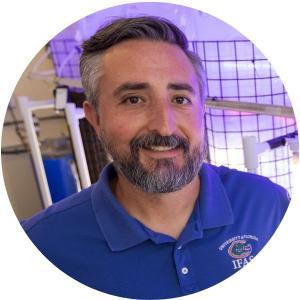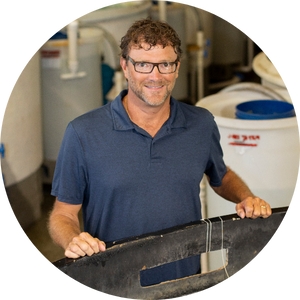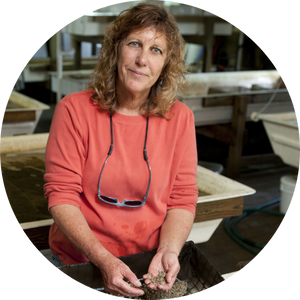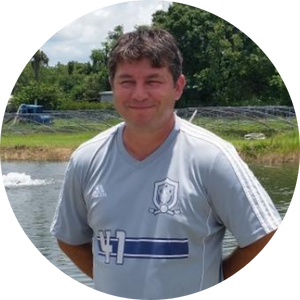Fisheries and Aquatic Sciences Program
Programs in Aquaculture, Aquatic Animal Health, Conservation and Management of Natural Environments, and Sustainable Fisheries
Fisheries and Aquatic Sciences (FAS) provides objective science to support the protection and management of fisheries and aquatic resources, with innovation and excellence in research, education, and Extension. Faculty have programs in four areas: Aquaculture, Aquatic Animal Health, Conservation and Management of Natural Environments, and Sustainable Fisheries. Many projects span these areas and involve collaboration with other scientists at UF, other universities and institutes, and state and federal resource management agencies.
-
Key Issues
- Minimum Flows and Levels (MFLs)– are established by Water Management Districts (WMD) to protect aquatic resources from harm due to anthropogenic alterations in flow. Citizens are concerned because each MFL affects availability of water for agriculture and urban areas, and recreational access. We work with multiple state and federal agencies to provide objective science regarding effects of MFLs on aquatic living resources, including fish and their essential habitats.
- Fish Stock Assessment – involves accurately estimating abundance, growth, age and size structure in order to maintain sustainable fisheries. Citizens are concerned because these assessments are used to set limits on commercial and recreational harvest. We provide objective science to agencies that assess stocks. Predictive modeling is the key growth area for this program.
- Fisheries Habitat Enhancement – relates to effects of mechanical habitat alteration in lakes and hydrologic restoration in rivers. Citizens are concerned about loss of fish habitat related to stabilized lake levels and shoreline development. We provide science to agencies in support of habitat remediation in fresh waters.
- Artificial Reefs – relates to research conducted over the last ten years by this Department to optimize size and configuration of artificial reefs as valuable fisheries habitat in the Gulf of Mexico. Citizens are concerned about intense fishing pressure on natural reefs and recognize the benefits of artificial reefs for sustainable fisheries, recreational diving, and other activities. We provide the science and outreach in support of state-wide development of this program.
- Toxic Algal Blooms – relates to impacts of blooms in freshwater and marine systems. Citizens are concerned about beach closures and fish kills due to red tides along the Gulf Coast and warnings about swimming, fishing and contact recreation in lakes and rivers. We are working with the College of Veterinary Medicine (CVM) to develop a comprehensive program to identify controls of algal blooms, levels of toxin production, and effects on fish and other aquatic biota.
- Eutrophication – relates to effects of increased nutrient inputs to lakes, springs, rivers and coastal waters, and to standards set by the USEPA and Florida Department of Environmental Protection (FDEP) to limit nutrient inputs to aquatic resources. Citizens are concerned about high costs and potential negative outcomes if nutrients are not controlled effectively. Agriculture is concerned that discharges will be subject to overly restrictive limits. We provide objective science used to set standards that are appropriate for certain water bodies, considering their historical conditions and designated uses.
- Exotic Species – number in the hundreds in Florida’s aquatic ecosystems, and include fish, invertebrates and plants. Many citizens are concerned about potential effects on native fish, shellfish and other biota, and this is a focus area for future research in our Department. We also work closely with the Center for Aquatic and Invasive Plants to examine effects of Hydrilla and other exotic / nuisance plants on ecosystem function and fishery production.
- Aquaculture – focuses on enhancing productivity of hard clam, sturgeon and ornamental fish aquaculture. Citizens who keep aquaria or raise, sell or eat farm-raised seafood reap the benefits of our research, which has helped farmers produce high quality, economically viable products. Two growth areas are: developing new products that interface with traditional agricultural operations to increase revenue and address non-point source runoff issues related to nutrient standards.
- Fish Kills and Aquatic Animal Health – focuses on effects of natural and anthropogenic pathogens and toxins on wild and cultured fish. Citizens who live near water or recreate on water are keenly aware that something is wrong when they see dead fish and/or fish with lesions. This Department, in concert with the CVM, examines how toxins and pathogens affect fish in natural systems and in the aquaculture industry, and identifies solutions to reduce risk of those impacts.
- Ecosystem Restoration – relates to large-scale restoration projects occurring across the state. Citizens are concerned about impacts of altered water flow and other stresses are they are aware that billions of taxpayer dollars are funding these projects. We provide objective science to WMDs and other agencies conducting ecosystem restoration, and they use this information to design effective restoration project.
-
History
The state of Florida is renowned for its fishery and aquatic resources. More than 1,300 linear miles of coastline, 12 major bays and estuaries, 7,800 – plus lakes, 100,000 ponds, and thousands of miles of navigable rivers provide residents and visitors with a lifestyle rich in aquatic recreational and commercial opportunities. In addition to the sheer quantity of water, Florida spans nearly seven degrees in latitude, encompassing both temperate and subtropical marine and freshwater ecosystems.
However, rapid population growth continues to place increasing demands on the Florida’s aquatic resources. Conserving marine and freshwater resources, enhancing food and agricultural production, and meeting the water demands of all the state is inhabitants, will depend upon prudent and far-sighted management.
Recognizing the need for information and expertise in fisheries and aquatic sciences, the Department was established in 1984 by a core group of faculty from the School of Forest, Fisheries, and Geomatics Sciences (Drs. Jerome Shireman, Daniel Canfield, Jr., Bill Haller, and Joseph Joyce).
Within several years, the fledgling program had expanded beyond the bounds of the School of Forest, Fisheries, and Geomatics Sciences, resulting in its own Degree awarding department within UF’s Institute of Food and Agricultural Sciences. At that point it was named the Department of Fisheries and Aquatic Sciences (FAS). Twenty-four years after its establishment, FAS has become one of the fastest growing departments for aquatic research and education in the country. With a highly diverse and accomplished faculty, it is able to offer students a rich academic foundation.
As of July 1, 2008 Fisheries and Aquatic Sciences merged with the School of Forest, Fisheries, and Geomatics Sciences (SFFGS) and is now one of three broad programmatic areas within the SFFGS along with Geomatics and Forest Resources and Conservation.
Core facilities have also expanded from one small building to a large complex including offices, classrooms, numerous laboratories, and a hatchery facility located in Gainesville, as well as satellite research/teaching facilities in Ruskin.
















.png)











